Holiday 2010 System Builder's Guide
by AnandTech Staff, edited by Jarred Walton on November 19, 2010 2:00 AM EST- Posted in
- Guides
- Systems
- Holiday 2010
| Brian's Intel Dream PC | ||
| Hardware | Component | Price |
| Processor |
2x Intel Xeon X5660 Westmere 32nm (Hex-core + HTT, 2.8 to 3.2 GHz, 12MB L3, 95W) |
2x $1225 |
| CPU HSF | 2x Xigmatek Dark Knight-S1283V | 2x $45 |
| Motherboard |
EVGA Classified SR-2 (Intel 5520, ICH10R, 270-WS-W555-A2) |
$590 |
| GPU | 2x EVGA SuperClocked GTX 580 | 2x $530 |
| Hard Drives | 4x Western Digital 1.5TB (WD1501FASS) | 4x $120 |
| OS Drive (SSD) | OCZ RevoDrive X2 240GB PCI-E 4x SSD | $680 |
| Memory | 2x Patriot 12GB (3x4GB) DDR3 1333 | 2x $360 |
| Power Supply | Antec TPQ-1200 80 Plus Silver | $250 |
| Case | Lian Li PC-V2120X ATX Full Tower | $500 |
| Optical Drive | LG 10x Blu-Ray Burner w/Lightscribe | $100 |
| Keyboard | Das Keyboard Professional Model S Silent | $135 |
| Alt Keyboard | Logitech G510 Keyboard | $100 |
| Mouse | Razer Mamba 5600 DPI Wired/Wireless | $130 |
| Monitor | Dell U3011 30" 2560x1600 IPS | $1350 |
| Sound Card | Creative 7.1 24-bit PCI-E X-Fi Titanium | $75 |
| Total System Price | $8610 | |
When I heard that the whole AnandTech staff was going to get to put together a rig of their choice, I instantly gravitated to the super high end. Heck, there's no reason you can't at least ask for the absolute best, even if you know it's out of your price range. For others, maybe you really do want to go sky high and push the limits of what's possible with desktop parts without getting too exotic. Either way, this dream machine build isn't for the faint of heart.
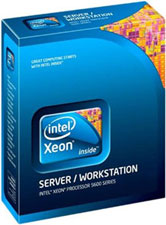
I've configured and built a number of dual processor Xeon 56xx series workstations in the past, yet each time destined for a fairly mundane existence doing computational modeling or some other serious business. Each time I'm finished, there's a brief but overwhelming temptation to install Crysis, Metro 2033—heck, something!—with all the eye candy on max with a 2560x1600 display. Each time, I shake that thought away right after finishing burn-in testing as I pop in the latest version of whatever *nix flavor is appropriate. I kid myself that maybe eventually I'll be able to build something like this without having to justify every bit of it as being vitally critical for modeling complicated scientific something or other. Anyway, if you've got nearly limitless piles of sweet cash lying around, this is the rig for you.
Starting out is really the motherboard. Initially, I wanted to go with a server-class motherboard, the SupermicroMBD-X8DTi, having worked with it and similar workstation boards in the past. If you want a dual CPU motherboard, the options basically dictate either a similar class of "server" motherboard like theMBD-X8DTi from Supermicro, something comparable from Tyan, or the only choice in the more conventional desktop class of products, the EVGA Classified SR-2. TheMBD-X8DTi and SR-2 are actually quite similar; both are built around the Intel 5520 and ICH10R chipsets, both are happy with an unreasonable number of triple 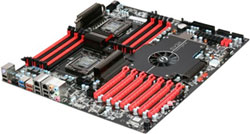 channel ECC or non-ECC DDR3-1333 memory, and both actually present similar PCI-E lane configurations. The Supermicro comes with onboard graphics, but we'd obviously recommend disabling that in the BIOS and forgetting about it. The Supermicro board costs $430, whereas the Classified SR-2 costs a slightly mind-bending $590. The difference between the two is ultimately whether you want SLI licensing so you can stick in some some multi-GPU goodness from NVIDIA. Remember that NVIDIA still requires either a BIOS key or NVIDIA bridge chip for SLI to work, both of which the cheaper Supermicro board lacks. AMD CrossFire remains feasible on both, but that difference, along with the more enthusiast-oriented features like overclocking support, ultimately led me to settle on the SR-2, despite its nose-bleed-inducing price tag.
channel ECC or non-ECC DDR3-1333 memory, and both actually present similar PCI-E lane configurations. The Supermicro comes with onboard graphics, but we'd obviously recommend disabling that in the BIOS and forgetting about it. The Supermicro board costs $430, whereas the Classified SR-2 costs a slightly mind-bending $590. The difference between the two is ultimately whether you want SLI licensing so you can stick in some some multi-GPU goodness from NVIDIA. Remember that NVIDIA still requires either a BIOS key or NVIDIA bridge chip for SLI to work, both of which the cheaper Supermicro board lacks. AMD CrossFire remains feasible on both, but that difference, along with the more enthusiast-oriented features like overclocking support, ultimately led me to settle on the SR-2, despite its nose-bleed-inducing price tag.
Of course, now that we've incurred such a large price premium to get a two-socket motherboard, we should stick in at least a couple hex-core CPUs, right? Two 6-core CPUs with Hyper-Threading gives a whopping 24 threads of power. For that, there's Intel Westmere—the SR-2 andMBX-X8DTi both support Xeon 5500 and 5600 series. At the most extreme, there's the 3.33GHz Xeon 5680, which runs $1725, but anyone can sort by price and see what's the most expensive, and we're still at least somewhat interested in performance per buck (or are we?) The Xeon 5680 can Turbo from 3.33GHz to 3.6GHz. Subjectively, the Xeon X5660 seems to be a better tradeoff between price and stock clock speed at 2.8GHz, plus you get a larger turbo boost up to 3.2GHz. Either way, the two CPUs will set you back a big chunk of change. As one reader pointed out, you also need a heatsink for Xeon, as it doesn't ship with one, so we grabbed a couple of Xigmatek Dark-Knight coolers.
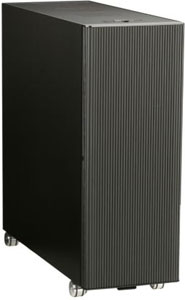
In the traditional workstation configuration, I usually opt for a Cooler Master Cosmos or Cosmos S, and when I think about what's really ultimate in the case market these days, my mind immediately settles on either the iconic Thermaltake Level 10 or the ABS Canyon 695. TheMBD-X8DTi and other workstation boards are E-ATX, which would fit in all the aforementioned cases but the Level 10. Unfortunately, the SR-2 is enormous and necessitated EVGA to define their own motherboard form factor entirely—HPTX—which is a mind-numbing 13.6" x 15". The result is that our case recommendation is limited unless you're willing to go custom or break out the Dremel. Luckily, there's a line of HPTX cases by Lian Li that are attractive and fit the SR-2 just fine. If you're opposed to finding a motherboard tray properly machined for HPTX or loath to do modifications yourself, the Lian Li PC-V2120X is what you should go for.
Moving along we come to the GPUs; I talked with Ryan on this to get his input, and ultimately we both agreed on 2xSLI GTX 580s. EVGA is (at time of this writing) offering the Superclocked version at 797MHz core/1594MHz shader clocks for prices on par with the competition's regularly clocked GTX 580s. The choice is simple at that point: go for the factory overclocked EVGA while it's still feasible.
Storage on a dream build would be incomplete without an SSD for the OS. Thankfully, the RevoDrive X2 is indeed bootable and thus makes an ideal drive for the OS and critical system apps. On every system I've built in recent memory, I've gone with an SSD + RAID array of slow but capacious storage; I think the same is best here. Get four or five 1.5TB or higher HDDs of whatever brand makes you feel warmest inside, toss them in a RAID5 set, and enjoy a crap-ton of storage that's fully redundant. I suppose if you're really feeling ultimate, you could get a RAID card instead of using the ICH10R's software fakeRAID, but it probably isn't critical unless you want to eek out everything you can from those mechanical drives.
My dream PC would be incomplete without at least 12GB of RAM—it's just that simple. I think it's safe to say that 6GB is pretty standard for midrange X58 gaming builds, with 8GB and 12GB starting to become the norm at the fringes. To stay safely ahead, you've got to move to 24GB, which is actually surprisingly common for workstations processing huge datasets that need to exist entirely in RAM. Of course, it's more than likely that no game will ever make use of the 24GB, but we're building the ultimate system here, right? The objective is to play Crysis within Crysis if we could. I settled on two sets of matched Patriot 12GB (3x4GB) kits, as all the 24GB (3x8GB) kits I could find were either sold out or lacked heat spreaders. You should still get triple-channel performance on either the SupermicroMBD-X8DTi or EVGA SR-2 with six populated memory slots, but it definitely makes me a little uneasy populating so many if you don't have lots of airflow.
For the power supply, we're big fans of the Antec TPQ-1200 Silver, which packs a half and half modular/fixed set of cables. It's a combination that provides the best of both worlds for not blocking airflow with unused power cables, and fixed cables for being absolutely certain connectors aren't a concern. The TPQ-1200 is (as the name implies) 1200W, which should be adequate for the SR-2, two Xeons, and two GTX 580s, plus all those mechanical drives.
I'm a fan of LG's 10x Blu-ray burner with LightScribe support, purely because it's SATA, well received, and I've built a number of systems with it in the past. You get DVD+/-R support at 16x, and CDR support at 48x, which is pretty standard. I'm a sucker for LightScribe support just because I always convince myself that the next batch of writeable disks I buy will also be LightScribe; sadly, I've somehow avoided ever doing it. Regardless, the optical drive is quickly becoming marginalized, but for your ultimate build, why not include one? Same thing with the sound card—you don't really need one anymore if onboard audio suffices, but if we're going for the ultimate, you might as well consider it.
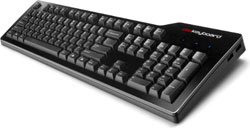
Since we're going all out, we'd be remiss if we didn't include suggestions for the peripherals as well. When I think of the ultimate keyboard, I immediately think of one keyboard—the Das Keyboard. If you haven't heard of it, chances are you've been living under a rock, or been blind sighted by all the flashy gaming-focused keyboards with copious amounts of LED lights but little attention to the mechanics of keydomes. If you want a gaming keyboard, get the Logitech G510—it's awesome and I have one—but if you're serious about typing, consider the Das Keyboard. Das Keyboard is essentially the modern IBM model M equivalent, and is a joy to type on purely because of the serious mechanical and aural feedback. For the mouse, I'm a huge fan of Razer. I worked my way from the Logitech MX1000 (the first laser mouse) through a number of Logitech and Razer mice alike, but keep settling back down on Razer. It's ultimately a matter of personal taste.
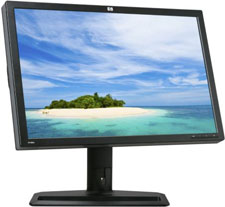
Last but certainly not least is the monitor. The choices here are quite obvious: either buy a 30" Dell U3011 or its archrival, the HP ZR30w. Both are IPS, both look superb, and both round out the dream configuration. Or maybe you need two 30-inchers? I've left out a fan recommendation since the stock fans for these Xeons have (thus far) seemed sufficient, but the usual Zalman 120mm or similar are always an option I'd encourage.
This configuration is again insane, but at the end of it all, I still find myself thoroughly convinced that if I had infinite monies, I'd put it together in a heartbeat—and maybe even splurge for that 3.33GHz Xeon 5680, regardless of the fact that it's overkill even for Crysis. If you had infinite cash or an appetite for the drooling-on-the-carpet insane—and need it right stinkin' now—this is the system I'd recommend, right after I note that Sandy Bridge is right around the corner. If this configuration is financially justifiable to you, by all means, do it! (And send us some benchmarks and pictures!) Alas, for me, it's still little more than a holiday dream.










112 Comments
View All Comments
PubicTheHare - Monday, November 22, 2010 - link
I see the case pictured in the "cover," but I don't recall any of the systems using this case. I know this case is highly regarded for it's airflow and design. Are some of the cases selected better in these regards, or is case selection truly that personal and cases within the same price range tend to perform the same?JarredWalton - Monday, November 22, 2010 - link
It's from Newegg's EggXpert system (see the shout out in my config on page 4), and it's a good case. I chose the Antec Three Hundred simply because there was a combo offer with the PSU to save $30, but I've used the HAF in a build before and liked it a lot. Anyway, mostly the picture was used simply to have a picture there with an introductory text. I figured some readers would notice the components didn't exactly match anything we selected, but I didn't think it would really matter. :-)pvdw - Friday, November 26, 2010 - link
For a near silent PSU go with the Nexus Value 430, or for more power the Seasonic S12II range.The0ne - Monday, November 29, 2010 - link
Just wanted to say thanks for making the guide base off of each reviewers choice. Personally I think this is a better way to approach a guide and sometimes a review than relying one one person.scarfinger68 - Monday, November 29, 2010 - link
With the help of great sites like AnandTech I finally put together a new system.COOLER MASTER HAF 922
AMD Phenom II X6 1090T Black Edition
ASUS M4N98TD EVO AM3 NVIDIA nForce 980a SLI ATX AMD
(2 for SLI) ASUS ENGTX460 (Fermi) 768MB 192-bit GDDR5
SeaSonic X750 Gold 750W GOLD Certified
CORSAIR XMS3 8GB (2 x 4GB) 240-Pin SDRAM DDR3 1333
(2)Western Digital Caviar Blue 250GB 7200 RPM SATA
Windows 7 Home Premium 64
It may not be perfect but its mine now. With shipping it came in at $1297.
Thanks again,
Joe
rdh - Tuesday, November 30, 2010 - link
That Athlon II X4 640 comes with a free MSI motherboard (or $10 upgrade to a choice of other Motherboards) at Microcenter. That would knock $75 off your price.I upgraded to the MSI msi 785g-e53 for $10 more. Total price was $106 for CPU and Motherboard after the $20 rebate. Also, there have been a rash of 4GB(2x2gb) DDR3 memory sales for $35 or $40 AR. Microcenter had the AData memory for $50 , no rebate.
In all, you can EASILY knock almost $90 off your budget price... enough for a Radeon 5670/4850/5750 Graphics adapter to create a TRUE budget gaming system for about $370.
rdh - Tuesday, November 30, 2010 - link
ps... only applies if you have a Microcenter... or someone who will match them... nearby.rufwork - Sunday, December 5, 2010 - link
I've been looking through NewEgg with this guide "in hand", and it appears there are several AM3 options that'll save a few bucks if you BYOV[ideo card]. That said, I couldn't quite get enough on Northbridges to figure out where I'm actually saving money and where I'm settling for less.Like the GIGABYTE GA-MA78LMT-S2 is currently $65 and $55 after rebate, but it has a 760G Northbridge. Enough to scare me away? The Intel budget system made do with two RAM slots, so I think that's okay. And it looks like it's still got an IDE plug for my old DVD and hard drives.
I'd like to conserve as many parts from my last white box, built five years ago, and the "recycler's low end" system is still a bit of an unknown. This is largely my fault for not keeping up with SATA, PATA, PCI-e/x, etc, but I'd love to see it all laid out for those with parts still laying around. Drives (hard and optical), cases & PSUs, and video cards seem to be the things with the best reuse potential -- but even PSUs might have new 8 pin connectors?
Alternatively, where would an out of touch buyer go?
(My first Celeron whitebox used an ISA sound card I borrowed from a friend's junk heap... I'm all about the reuse.)
FullHiSpeed - Friday, December 17, 2010 - link
I would love to reach for the stars and have Brian's 24 thread dream machine (or see how it performs).If you're not ready to spend $3760 on CPU, MB, and RAM, you can get 2/3 the number of threads for 1/3 the price like this:
SUPERMICRO MBD-X8DAL-i-O Dual LGA 1366 Server Motherboard $289.99
16 logical processors - Xeon E5620 2.4GHz 80W Quad-Core CPU 2 *$384.99= $769.98
12g GB RAM - 2 x Kingston (3 x 2GB) DDR3 1333 ECC KVR1333D3E9SK3/6G 2 * 90.99 = $181.98
That's the guts of a 16 thread machine for $1,241.95
Stormblade - Tuesday, January 4, 2011 - link
I was all set to start building my machine. I based it on the High End Gaming system here. I'd gone so far as to add the parts to my cart. Came back to check on something and I see the article about Sandy Bridge. Well now I gotta re-think.Definitely want to get an i7-2600K but which motherboard? I see the Asus P8P67 being coupled with it so was thinking of basically still getting the system described but getting that MB and CPU instead. Any thoughts on whether this is a horrible idea or not?